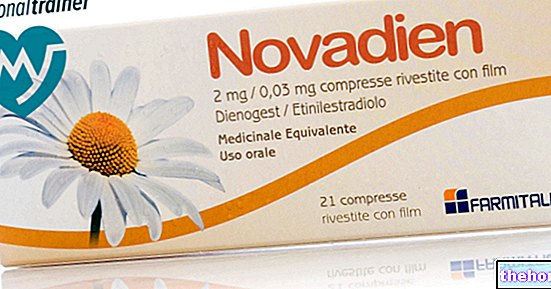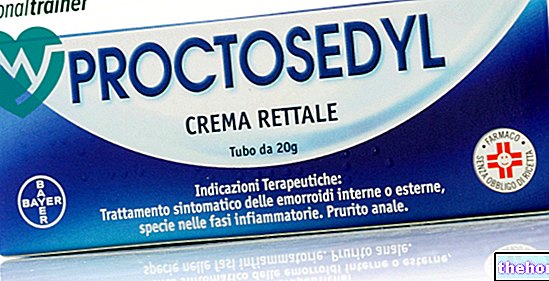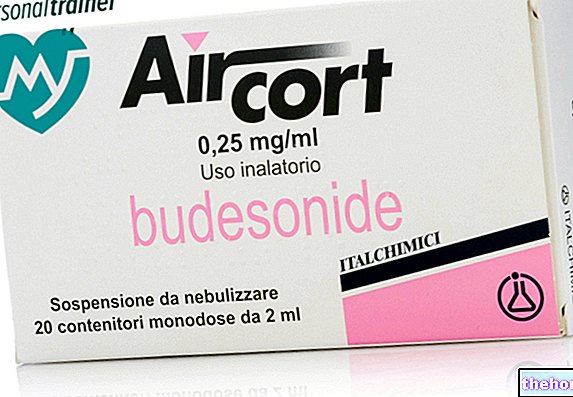Active ingredients: Dried liquid extract of the roots of Pelargonium sidoides (1: 8-10)
KALOBA 20 mg film-coated tablets
Kaloba package inserts are available for pack sizes:- KALOBA 20 mg film-coated tablets
- KALOBA 20 mg / 1.5 ml oral drops, solution
- KALOBA Kaloba 20 mg / 7.5 ml syrup
Why is Kaloba used? What is it for?
PHARMACOTHERAPEUTIC CATEGORY
Prepare for coughs and colds
THERAPEUTIC INDICATIONS
Traditional herbal medicine indicated for the alleviation of the common cold. The use of this traditional herbal medicine, for the indicated therapeutic indications, is based exclusively on the experience of many years of use.
Contraindications When Kaloba should not be used
- Hypersensitivity to the active substance or to any of the excipients.
- Tendency to bleed.
- Taking drugs that inhibit clotting.
- Severe liver and kidney disease, as there is insufficient experience in these cases.
- Pregnancy or breastfeeding.
- Children under the age of 12.
Precautions for use What you need to know before taking Kaloba
In the event that during the administration of Kaloba you find:
- symptoms of liver problems;
- fever that lasts for several days;
- tachypnea (difficulty breathing) or hemoptysis (blood in the spit);
Kaloba treatment should be stopped immediately and your doctor consulted.
Interactions Which drugs or foods can change the effect of Kaloba
Tell your doctor or pharmacist if you have recently taken any other medicines, even those without a prescription.
Due to the possible influence on coagulation parameters, and the drug may enhance the effects of anticoagulant drugs taken concomitantly such as phenprocoumon and warfarin.
Warnings It is important to know that:
Pregnancy and breastfeeding
Consult your doctor before taking any medicine during pregnancy and breastfeeding.
The safety of Kaloba during pregnancy and breastfeeding has not been established. Therefore, the use of Kaloba during pregnancy and breastfeeding is contraindicated.
Effects on ability to drive and use machines
No studies on the effects on the ability to drive and use machines have been performed.
Important information about the ingredients of Kaloba:
This medicine contains lactose: In case of intolerance to some sugars consult your doctor before taking this medicine.
Dosage and method of use How to use Kaloba: Dosage
Dosage
Adults and adolescents (12-18 years)
1 tablet 3 times a day (in the morning, at noon and in the evening).
Pediatric population
Kaloba should not be given to children under 12 years of age due to a lack of data on safety and efficacy.
Duration of treatment
The maximum duration of treatment is 7 days. See your doctor if your cold symptoms don't improve within a week
Method of administration
The tablet should be taken with some liquid, without being chewed.
Overdose What to do if you have taken too much Kaloba
Overdose may increase the frequency and / or intensity of undesirable effects. Treatment of overdose should be symptomatic. In case of accidental overdose of KALOBA, notify your doctor immediately or contact the nearest hospital.
If you have any questions about the use of KALOBA, ask your doctor or pharmacist.
Side Effects What are the side effects of Kaloba
Like all medicines, KALOBA can cause side effects, although not everybody gets them.
Assessment of adverse reactions is based on the following information regarding frequency:
Gastrointestinal disorders:
Uncommon: stomach pain, heartburn, nausea or diarrhea.
Rare: mild gingival bleeding.
Respiratory, thoracic and mediastinal disorders:
Rare: mild nasal bleeding.
Skin and subcutaneous tissue disorders / Immune system disorders:
Rare: hypersensitivity reaction (type-I reactions with rash, urticaria, itching of the skin and mucous membranes; type-II reactions with formation of antibodies).
Very rare: severe hypersensitivity reactions with swelling of the face, dyspnoea and drop in blood pressure.
Hepatobiliary disorders:
Very rare: liver function alterations: the causal link between this finding and the use of the product has not been demonstrated.
Compliance with the instructions contained in the package leaflet reduces the risk of undesirable effects.
Reporting of side effects
If you get any side effects, talk to your doctor or pharmacist. This includes any possible side effects not listed in this leaflet. Side effects can also be reported directly via the national reporting system at https://www.aifa.gov.it/content/segnalazioni-reazioni-avverse. By reporting side effects you can help provide more information on safety of this medicine.
Expiry and Retention
Expiry: see the expiry date indicated on the package.
The expiry date indicated refers to the product in intact packaging, correctly stored.
Warning: Do not use the medicine after the expiry date indicated on the package.
Medicines should not be disposed of via wastewater or household waste.
Ask your pharmacist how to throw away medicines you no longer use. This will help protect the environment.
KEEP THE MEDICINAL PRODUCT OUT OF THE SIGHT AND REACH OF CHILDREN.
Composition and pharmaceutical form
COMPOSITION
One film-coated tablet contains
Active principle:
20 mg of dried liquid extract of the roots of Pelargonium sidoides (1: 8 - 10) The extractive agent is 12% (v / v) ethanol.
Excipients:
Maltodextrin, microcrystalline cellulose, lactose monohydrate, croscarmellose sodium, precipitated silica, magnesium stearate, hypromellose 5 mPas, macrogol 1500, yellow iron oxide E172, red iron oxide E 172, titanium dioxide E 171, talc, simethicone, methylcellulose, sorbic acid.
PHARMACEUTICAL FORM and CONTENT
Film-coated tablets - pack of 21 tablets of 20 mg, in blister packs
Source Package Leaflet: AIFA (Italian Medicines Agency). Content published in January 2016. The information present may not be up-to-date.
To have access to the most up-to-date version, it is advisable to access the AIFA (Italian Medicines Agency) website. Disclaimer and useful information.
01.0 NAME OF THE MEDICINAL PRODUCT
KALOBA
02.0 QUALITATIVE AND QUANTITATIVE COMPOSITION
Tablets. Active ingredient: one film-coated tablet contains 20 mg of dried liquid extract of the roots of Pelargonium sidoides (1: 8 -10) (EPs 7630). The extractive agent is 12% (v / v) ethanol.
Drops. Active ingredient: 10 g (= 9.75 ml) of solution contain 8.0 g of extract of the roots of Pelargonium sidoides (1: 8 -10) (EPs 7630). The extractive agent is 12% (v / v) ethanol.
For the full list of excipients see section 6.1.
03.0 PHARMACEUTICAL FORM
Tablets. Film-coated tablet. KALOBA is a round, reddish-brown film-coated tablet.
Drops. Oral drops, solution. KALOBA is a light brown to reddish brown solution.
04.0 CLINICAL INFORMATION
04.1 Therapeutic indications
Traditional herbal medicine indicated for the alleviation of the common cold.
The use of this traditional herbal medicine, for the indicated therapeutic indications, is based exclusively on the experience of many years of use.
04.2 Posology and method of administration
Tablets. Adults and adolescents over 12 years of age take 1 tablet 3 times a day (in the morning, at noon and in the evening). KALOBA must be taken with some liquid, without being chewed.
Drops. Adults and adolescents over 12 years of age take 30 drops 3 times a day.
The drops can be taken directly with a spoon or diluted in a little liquid in the morning, at noon and in the evening.
Duration of treatment: the maximum duration of therapy is 7 days.
04.3 Contraindications
• Hypersensitivity to the active substance or to any of the excipients.
• Increased bleeding tendency.
• Taking drugs that inhibit clotting.
• Severe liver and kidney disease, as there is insufficient experience in these cases.
• Pregnancy or breastfeeding.
• Children under 12 years of age.
04.4 Special warnings and appropriate precautions for use
Consult a doctor or a qualified healthcare professional if symptoms persist during the use of the medicinal product or if adverse reactions not mentioned in the package leaflet occur. Consult a doctor if your condition does not improve within a week, in the case of fever that last for several days or in the case of tachypnea or haemoptysis (blood in the spit).
Tablets. Patients with rare hereditary problems of galactose intolerance, the Lapp lactase deficiency or glucose-galactose malabsorption should not take this medicine.
Drops. This medicinal product contains 12% (v / v) ethanol (alcohol) which corresponds to 180 mg of alcohol for each single dose (30 drops) equivalent to 3.6 ml of beer or 1.5 ml of wine: it can be harmful to alcoholics; to be taken into consideration in adolescents and high-risk groups such as people with liver disease or epilepsy. Avoid concomitant use of other products containing alcohol.
04.5 Interactions with other medicinal products and other forms of interaction
No information is available regarding possible interactions with other medicinal products. If the patient is already being treated with drugs, it is necessary to take the product after consulting the doctor. Due to the possible influence on coagulation parameters, it cannot be excluded that the product increases the effects of anticoagulant drugs taken concomitantly such as phenprocoumon and warfarin.
04.6 Pregnancy and lactation
Safety during pregnancy and lactation has not been established. As a precautionary measure, due to lack of data, use during pregnancy and lactation is contraindicated.
04.7 Effects on ability to drive and use machines
No studies on the effects on the ability to drive and use machines have been performed.
04.8 Undesirable effects
Assessment of adverse reactions is based on the following information regarding frequency:
Very common: more than 1 in 10 people treated
Common: less than 1 in 10 but more than 1 in 100 people treated
Uncommon: less than 1 in 100 but more than 1 in 1,000 people treated
Rare: less than 1 in 1,000 but more than 1 in 10,000 people treated
Very rare: less than 1 in 10,000 people treated, including cases with unknown frequency
Gastrointestinal disorders:
Uncommon: stomach pain, heartburn, nausea or diarrhea.
Rare: mild gingival bleeding.
Respiratory, thoracic and mediastinal disorders:
Rare: mild nasal bleeding.
Skin and subcutaneous tissue disorders / Immune system disorders:
Rare: hypersensitivity reactions (type-I reactions with rash, urticaria, itching of the skin and mucous membranes; type-II reactions with formation of antibodies).
Very rare: severe hypersensitivity reactions with swelling of the face, dyspnoea and drop in blood pressure.
Hepatobiliary disorders:
Very rare: changes in liver function; the causal link between this finding and the use of the product has not been demonstrated.
Reporting of suspected adverse reactions.
Reporting of suspected adverse reactions occurring after authorization of the medicinal product is important as it allows continuous monitoring of the benefit / risk balance of the medicinal product. Healthcare professionals are asked to report any suspected adverse reactions via the national reporting system. "address https://www.aifa.gov.it/content/segnalazioni-reazioni-avverse.
04.9 Overdose
There is no information on overdose cases, however overdose may increase the frequency of occurrence and / or the intensity of undesirable effects. Therefore, the recommended directions, posology and treatment modality should be followed.
Treatment of overdose should be symptomatic.
05.0 PHARMACOLOGICAL PROPERTIES
05.1 Pharmacodynamic properties
Pharmacotherapeutic group: preparations for cough and colds. ATC code: R 05.
05.2 "Pharmacokinetic properties
Not required.
05.3 Preclinical safety data
Non-clinical data did not reveal any particular risks for humans.
06.0 PHARMACEUTICAL INFORMATION
06.1 Excipients
Tablets. Maltodextrin, microcrystalline cellulose, lactose monohydrate, croscarmellose sodium, precipitated silica, magnesium stearate, hypromellose 5 mPas, macrogol 1500, yellow iron oxide E172, red iron oxide E 172, titanium dioxide E 171, talc, simethicone, methylcellulose, sorbic acid.
Drops. 85% glycerol.
06.2 Incompatibility
It does not apply.
06.3 Period of validity
Tablets. The shelf life of KALOBA tablets is 5 years.
Drops. Shelf life of KALOBA oral drops, solution is 2 years. The validity of the solution after opening the bottle is 6 months.
06.4 Special precautions for storage
Tablets. This medicinal product does not require any special storage conditions.
Drops. Store at a temperature not exceeding 30 ° C.
Note to the patient: After a long period, plant extracts in liquid form may become cloudy; however, this has no effect on the efficacy of the product.
Since the KALOBA solution is a natural product, slight variations in color and taste may occur.
06.5 Nature of the immediate packaging and contents of the package
Tablets. The film-coated tablets are sealed in PVC / PVDC and aluminum blisters.
KALOBA is available in packs of 21 film-coated tablets.
Drops. Bottle of dark glass, hydrolytic class III (Ph. Eur.), With dropper and screw cap (PP / PE), in bottle of 20 ml of oral drops, solution.
06.6 Instructions for use and handling
No special instructions.
Unused product or waste material must be disposed of in accordance with local legal requirements.
07.0 MARKETING AUTHORIZATION HOLDER
Dr. Willmar Schwabe GmbH & Co. KG
Willmar-Schwabe-Str. 4
D-76227 Karlsruhe (Germany)
SALES DEALER
Loacker Remedia S.r.l.
Egna-Neumarkt (Bz)
www.loackerremedia.it
08.0 MARKETING AUTHORIZATION NUMBER
Tablets. KALOBA 20 mg film-coated tablets - pack of 21 tablets - AIC n. 038135012
Drops. KALOBA 8 g / 9.75 ml oral drops, solution - 20 ml bottle - AIC n. 038135048
09.0 DATE OF FIRST AUTHORIZATION OR RENEWAL OF THE AUTHORIZATION
June 2010
10.0 DATE OF REVISION OF THE TEXT
February 2014




























